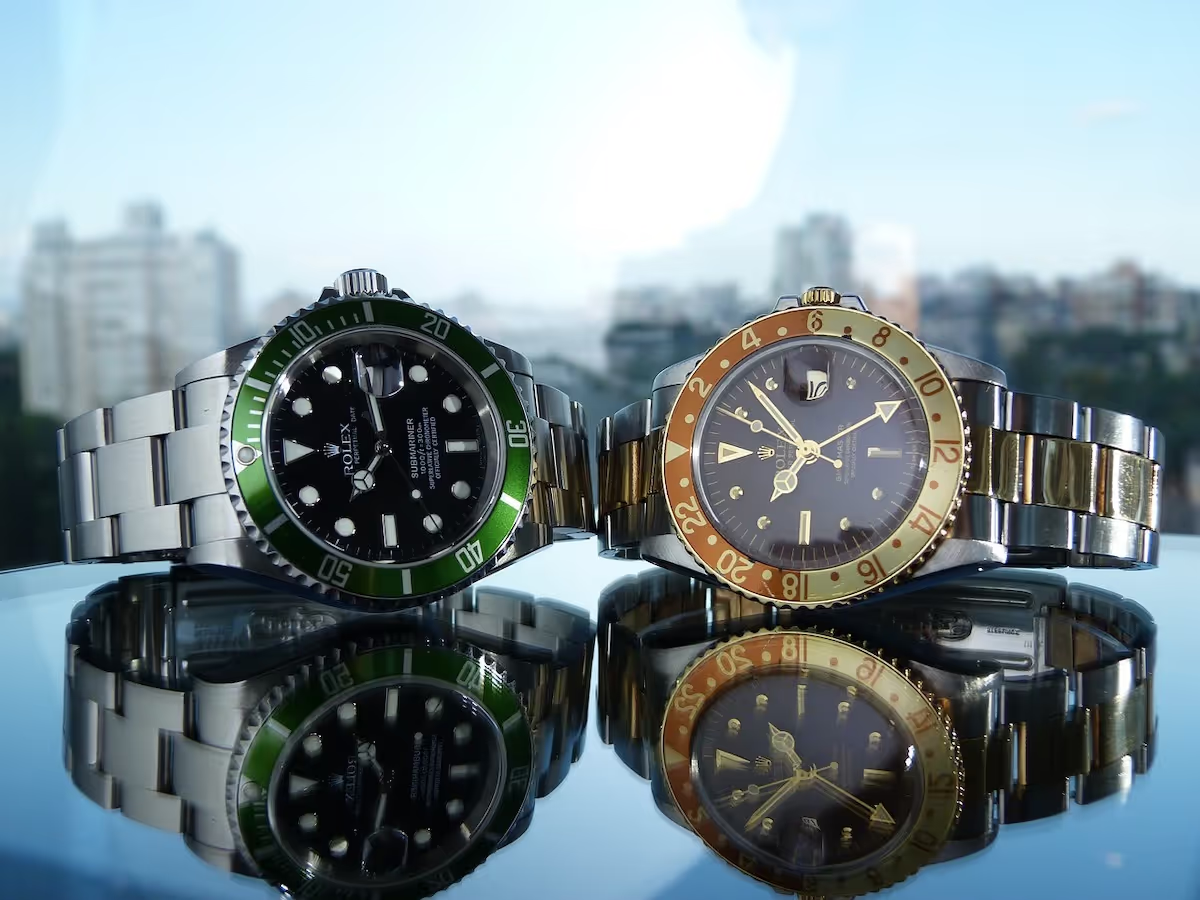Profitable and timelessly beautiful: Luxury watches outstrip stocks

The market for luxury watches has been booming for years. Despite a slight fall in prices over the past twelve months, coveted models from Patek Philippe, Rolex and Audemars Piguet are more expensive than ever before - and even beat equities as an asset class in terms of their return. Find out more about the current development of the watch market, why luxury timepieces represent an excellent investment, and which models are particularly interesting from an investor's perspective.
Luxury watch market development
For a long time, expensive wristwatches were primarily regarded as a status symbol and collector's item. But in recent years, which have been characterized by market fluctuations, zero interest rates and the corona pandemic, many investors have sought “safe havens” for their capital. That is why more and more people invested in tangible assets as an investment. Ideally with a personal connection - such as fine wine, art, real estate or even luxury watches. These so-called “sweetheart” investments are particularly popular among younger people. During the lockdown, wealthy millennials and Generation Z consumers discovered the expensive new hobby of Swiss watches, and wealthy Asian buyers also drove up prices.
This is underscored by Overall market index from WatchCharts — an indicator of financial trends in the second-hand watch market. It consists of 60 watches from the ten most important luxury watch brands by transaction value and shows the average market price of these 60 watches (in USD) over time. In January 2020, it was still trading at 21,966 dollars - the index currently stands at around 33,500 dollars.
And this is despite a fall in prices in recent months, which was primarily the result of an excess supply: watch retailers and private sellers have flooded the market with timepieces. Even coveted racers such as Daytona models from Rolex, the Nautilus from Patek Philippe and the Royal Oak from Audemars Piguet have increasingly been offered for sale. As a result, the number of watches on the secondary market increased steadily over the past year. In December 2022, available stocks were 50 percent higher than at the same time in the previous year, according to WatchCharts.
Nevertheless, the market for used luxury watches grew according to a Boston Consulting study 2022 to 24 billion dollars - this is almost half of the market for new watches, which is worth 55 billion dollars. Boston Consulting expects a further annual growth of nine percent to 35 billion dollars by 2026. LuxeConsult, an independent consulting firm for the Swiss watch industry, recently predicted that the second-hand market will overtake that for new watches by 2033 and could then reach 85 billion dollars.
Used luxury watches beat stocks as an asset class
Price increases and growth forecasts of this magnitude suggest that luxury watches need not be afraid of comparison with other asset classes such as equities. According to Boston Consulting, expensive timepieces from the three luxury brands Rolex, Patek Philippe and Audemars Piguet have actually grown by an average of 20 percent per year since 2018 and thus significantly exceeded the performance of the US stock market: The leading S&P 500 index achieved an average return of “only” eight percent per year from August 2018 to January 2023. This was not a unique phenomenon: Even during the 2007-2009 financial crisis, the price trend for collector's watches exceeded the return on the S&P 500.
Export hit Swiss watches
According to study data, investors' attention has focused primarily on these models: the Nautilus by Patek Philippe, the Royal Oak from Audemars Piguet and the Daytona and GMT Master II from Rolex. On the second-hand market, these models usually fetch 200 percent of the market price first-hand. Individual Rolex Cosmograph Daytona watches with a retail price of 14,800 dollars were recently sold on second-hand watch exchanges for 24,250 to 38,500 dollars.
In general, Swiss watches are and remain particularly sought after by fans and investors around the world. This is illustrated by the export figures from last year: 2022 was Watches worth a total of around 23 billion francs (25.6 billion dollars) sold - a new record. It was particularly interesting that although the number of exported watches has fallen, more expensive timepieces starting at around 3,000 francs per piece were sold. The USA, China and Hong Kong remained the most important export markets for Swiss watches; Germany was in seventh place.
Stylish inflation protection
Expensive watches are good as investments and inflation protection - but not every model on the market can achieve the desired increase in value. If you want to generate attractive returns with luxury watches one day, you need capital, stamina, industry knowledge and extensive watch expertise. Because deceptively genuine watch counterfeits from China in particular pose a risk for manufacturers, online retailers and buyers. It is therefore advisable to consult experts before buying a luxury watch. But even then, factors such as price and liquidity pose a problem. For one thing, luxury watches can cost five to six figures. Money that not every private investor has “on the high edge.” On the other hand, the capital invested in watches is usually tied to a few properties and can therefore not be diversified and quickly liquidated if necessary.
It is therefore recommended for beginners to invest money in digitized tangible assets. In this way, watch fans can already Invest from 500 euros in various collectibles such as luxury watches from Rolex or Patek Philippe, are “on the safe side”, do not have to pay expensive audit costs, benefit from yield development and remain liquid. This is because digital tangible assets can be offered for sale on the secondary market at any time.



